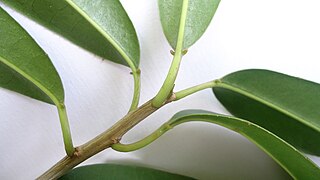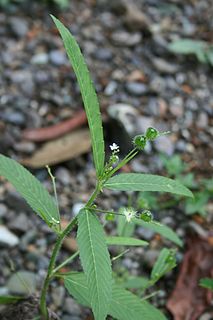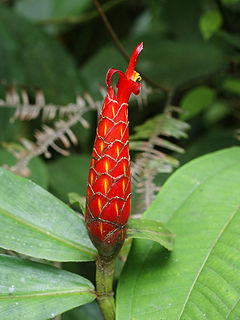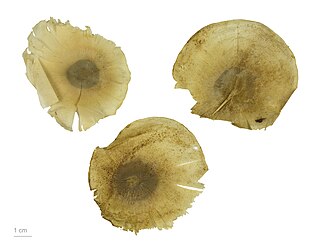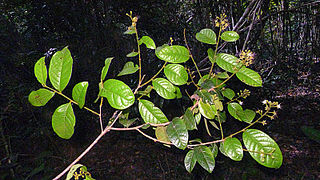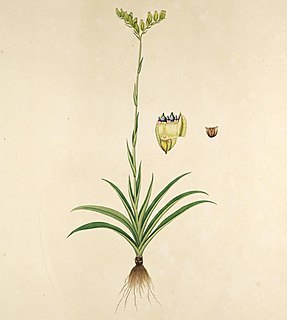| Gymnosiphon | |
|---|---|
 | |
| Gymnosiphon longistylus | |
| Scientific classification | |
| Kingdom: | Plantae |
| Clade: | Tracheophytes |
| Clade: | Angiosperms |
| Clade: | Monocots |
| Order: | Dioscoreales |
| Family: | Burmanniaceae |
| Genus: | Gymnosiphon Blume |
| Synonyms [1] | |
| |
Gymnosiphon (yellowseed) [2] is a genus of monocotyledonous flowering plants from the yam order. Like most of the other members of the family in which the plant is placed (Burmanniaceae), Gymnosiphon is entirely myco-heterotrophic genus that does not contain chlorophyll and respectively does not perform photosynthesis. [3]
Gymnosiphon is distributed across the moist, tropical regions of Asia, America and Africa. [1] The plant has very small size and thin stems. Leaves are rudimentary and with appearance like scales or bracts. Its flowers are white in color, pale and solitary or sometimes collected in tiny inflorescences of few depending on the species. They are also actinomorphic with three larger outer tepals and three more inner and smaller ones. [4]
Phylogenetically Gymnosiphon is placed in the clade of Burmanniaceae sensu stricto.
- Species [1]
- Gymnosiphon affinis - New Guinea
- Gymnosiphon afro-orientalis - SC Africa
- Gymnosiphon aphyllus - Taiwan, SE Asia, New Guinea, Micronesia
- Gymnosiphon bekensis - C Africa
- Gymnosiphon brachycephalus - Panama, NW S America
- Gymnosiphon breviflorus - Costa Rica, Panama, N South America
- Gymnosiphon capitatus - Guyana, NW Brazil
- Gymnosiphon constrictus - Gabon
- Gymnosiphon cymosus - N South America
- Gymnosiphon danguyanus - Tanzania, Madagascar
- Gymnosiphon divaricatus - S Mexico, Trinidad, C + S America
- Gymnosiphon fimbriatus - N South America
- Gymnosiphon guianensis - Guyana, Suriname
- Gymnosiphon longistylus - C + W Africa
- Gymnosiphon marieae - Madagascar
- Gymnosiphon minahassae - Sulawesi
- Gymnosiphon minutus - Costa Rica, N South America
- Gymnosiphon neglectus - Java
- Gymnosiphon niveus - West Indies
- Gymnosiphon okamotoi - Palau in Micronesia
- Gymnosiphon oliganthus - NE Papua New Guinea
- Gymnosiphon panamensis - from Veracruz to Panama
- Gymnosiphon papuanus - New Guinea, Sulawesi, Palau
- Gymnosiphon pauciflorus - New Guinea
- Gymnosiphon recurvatus - Guyana
- Gymnosiphon samoritoureanus - Guinea, Liberia
- Gymnosiphon sphaerocarpus - Pernambuco, West Indies
- Gymnosiphon suaveolens - Mexico, C + S America
- Gymnosiphon tenellus - Jamaica, C America, NW S America
- Gymnosiphon usambaricus - Kenya, Tanzania

